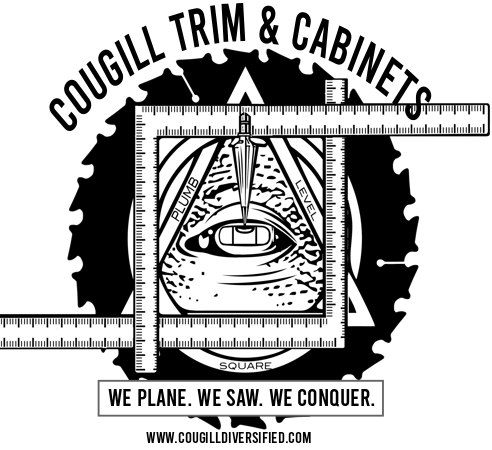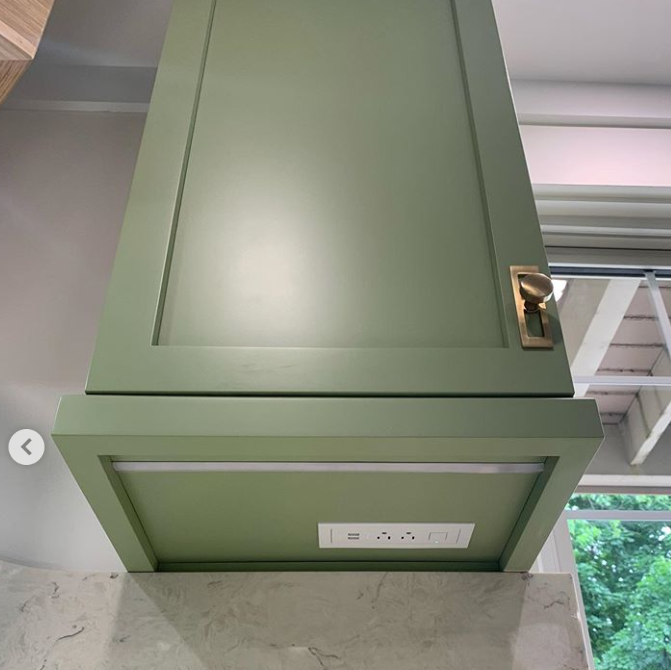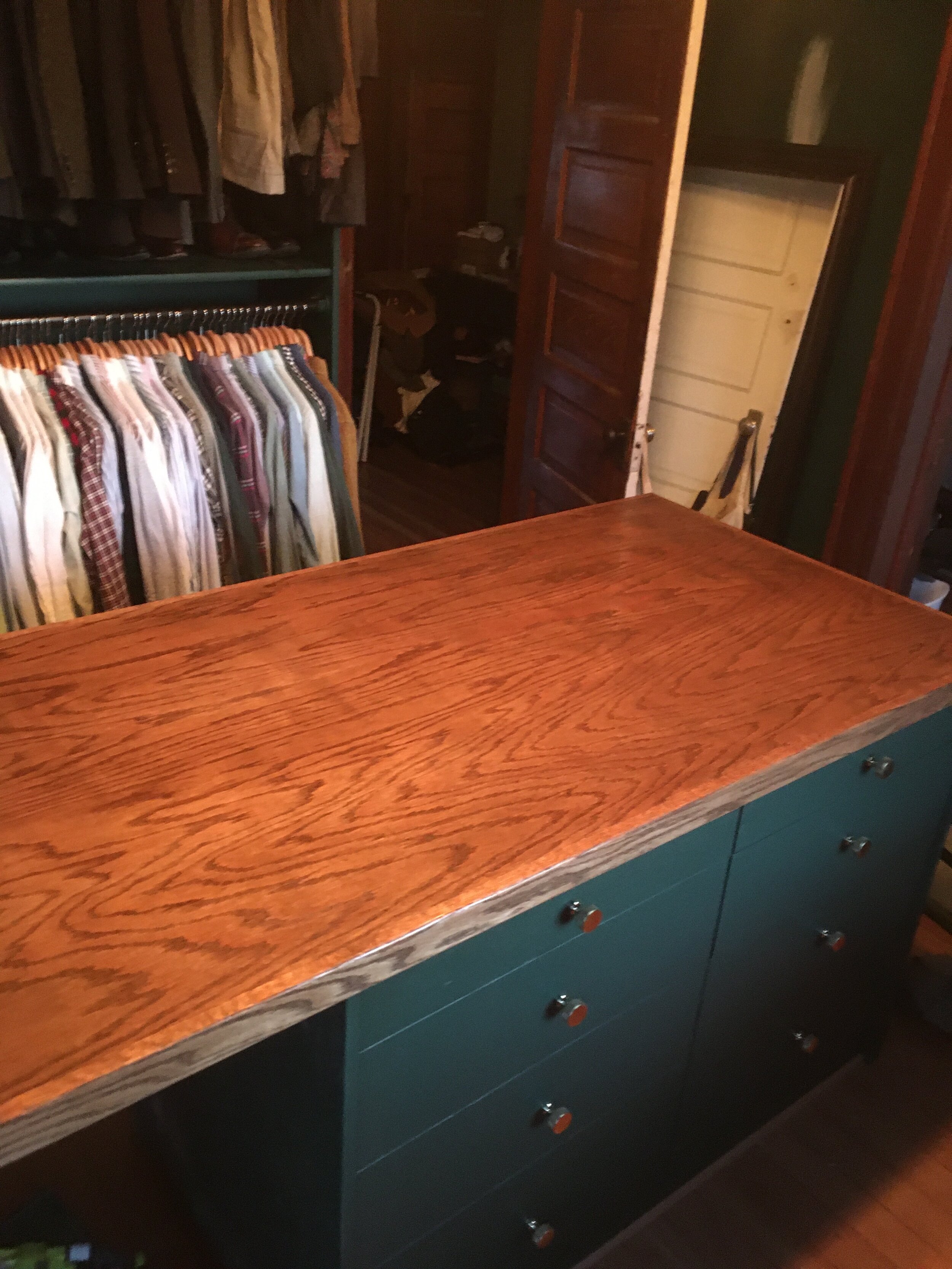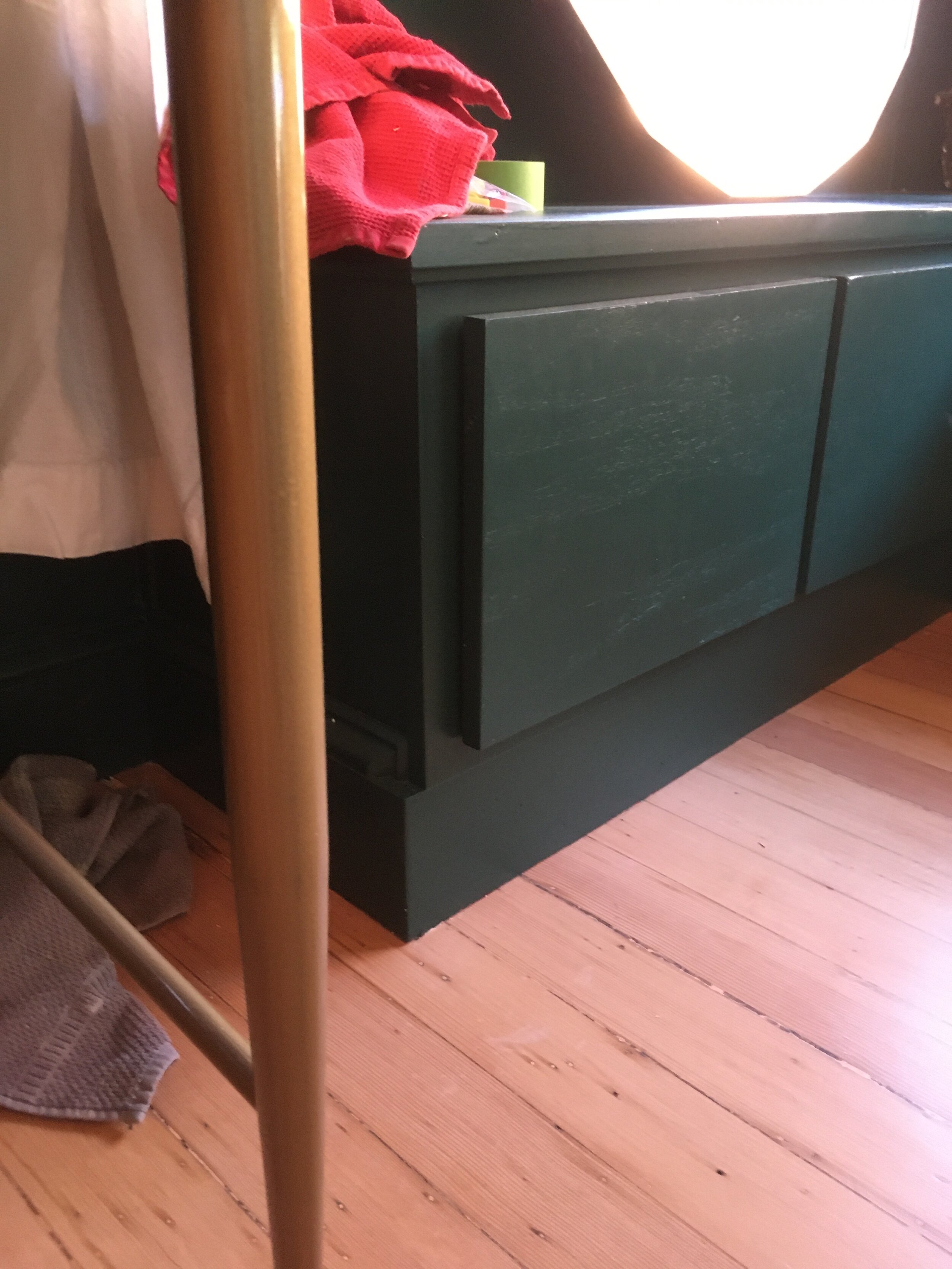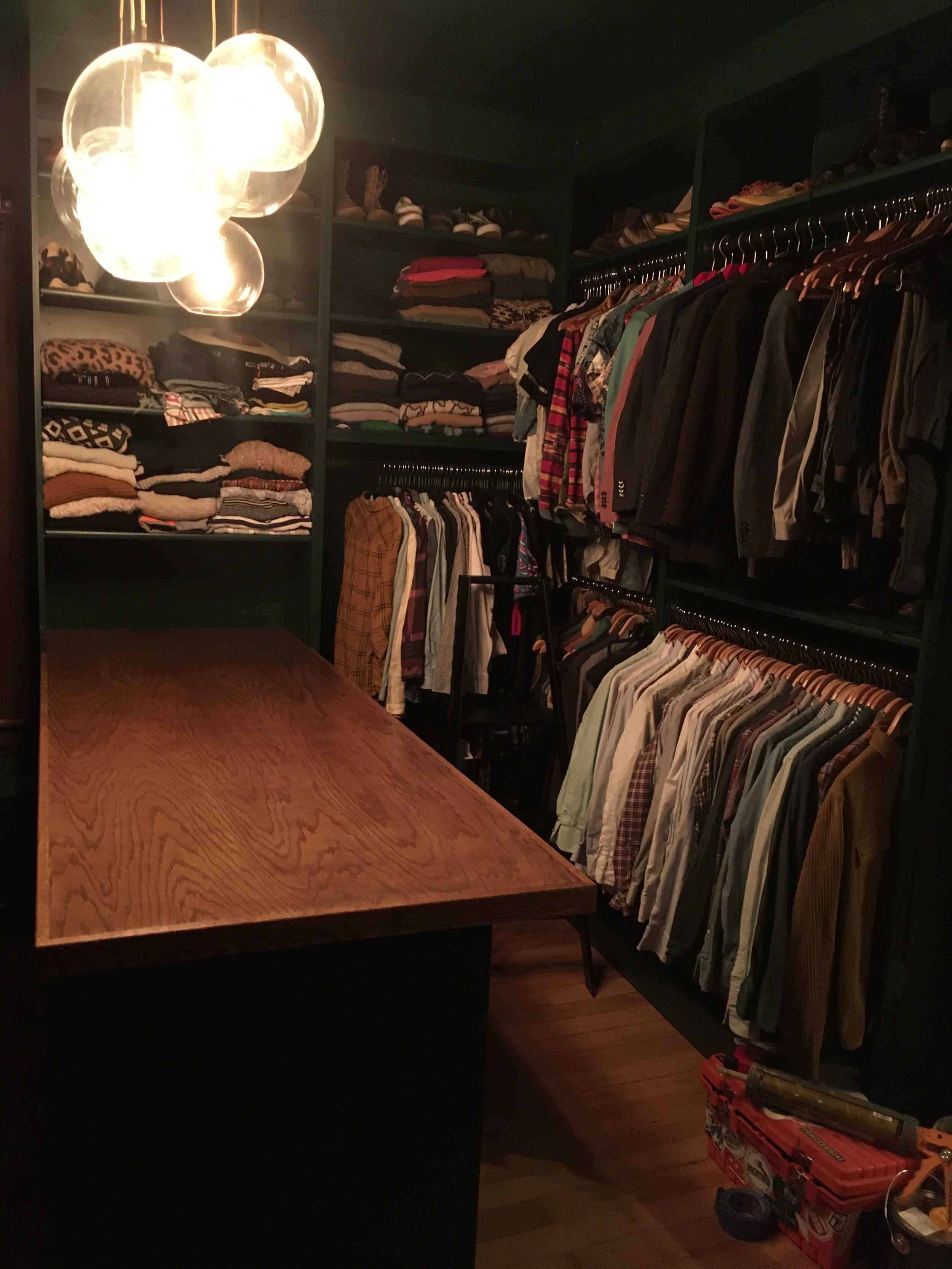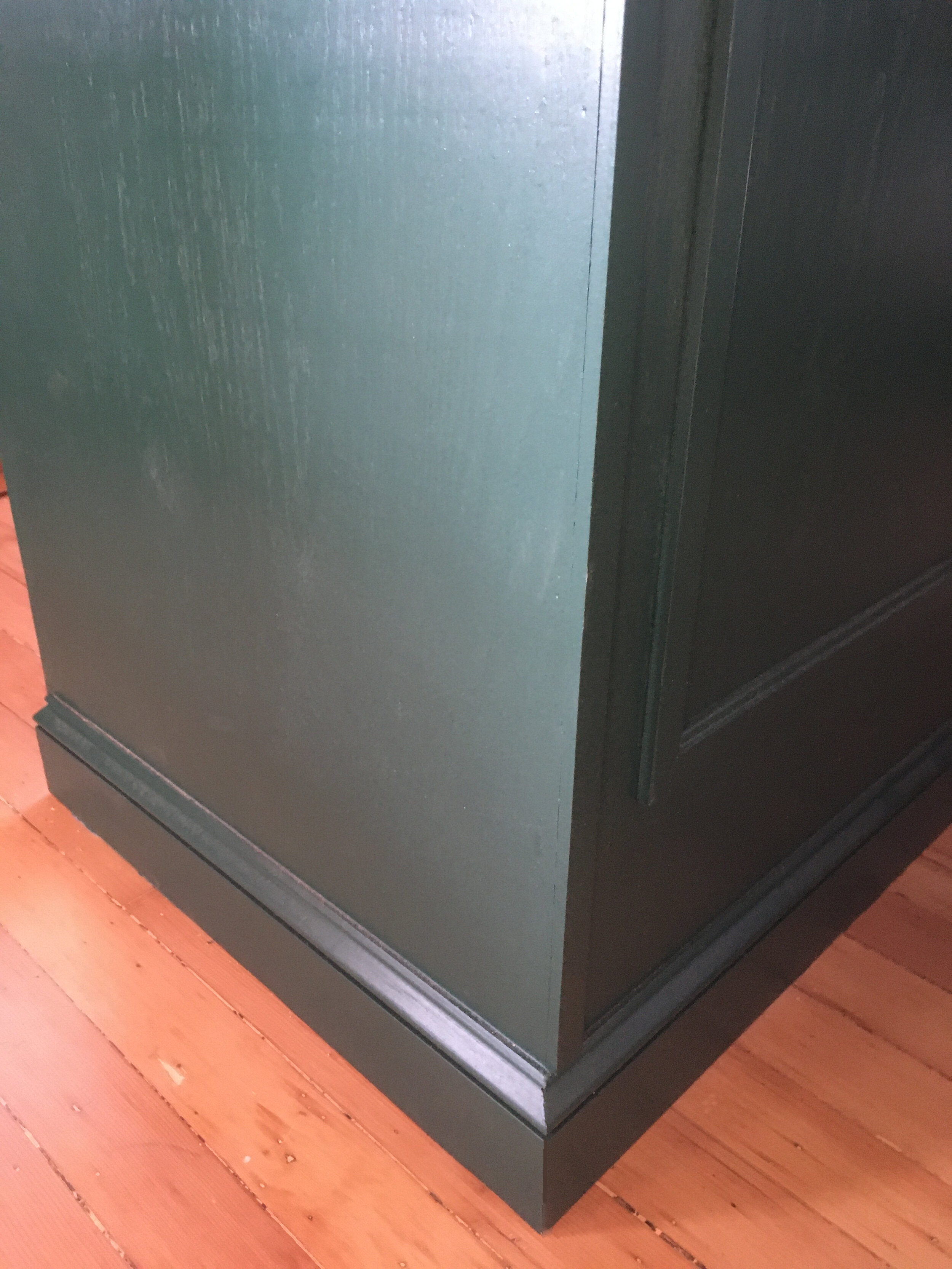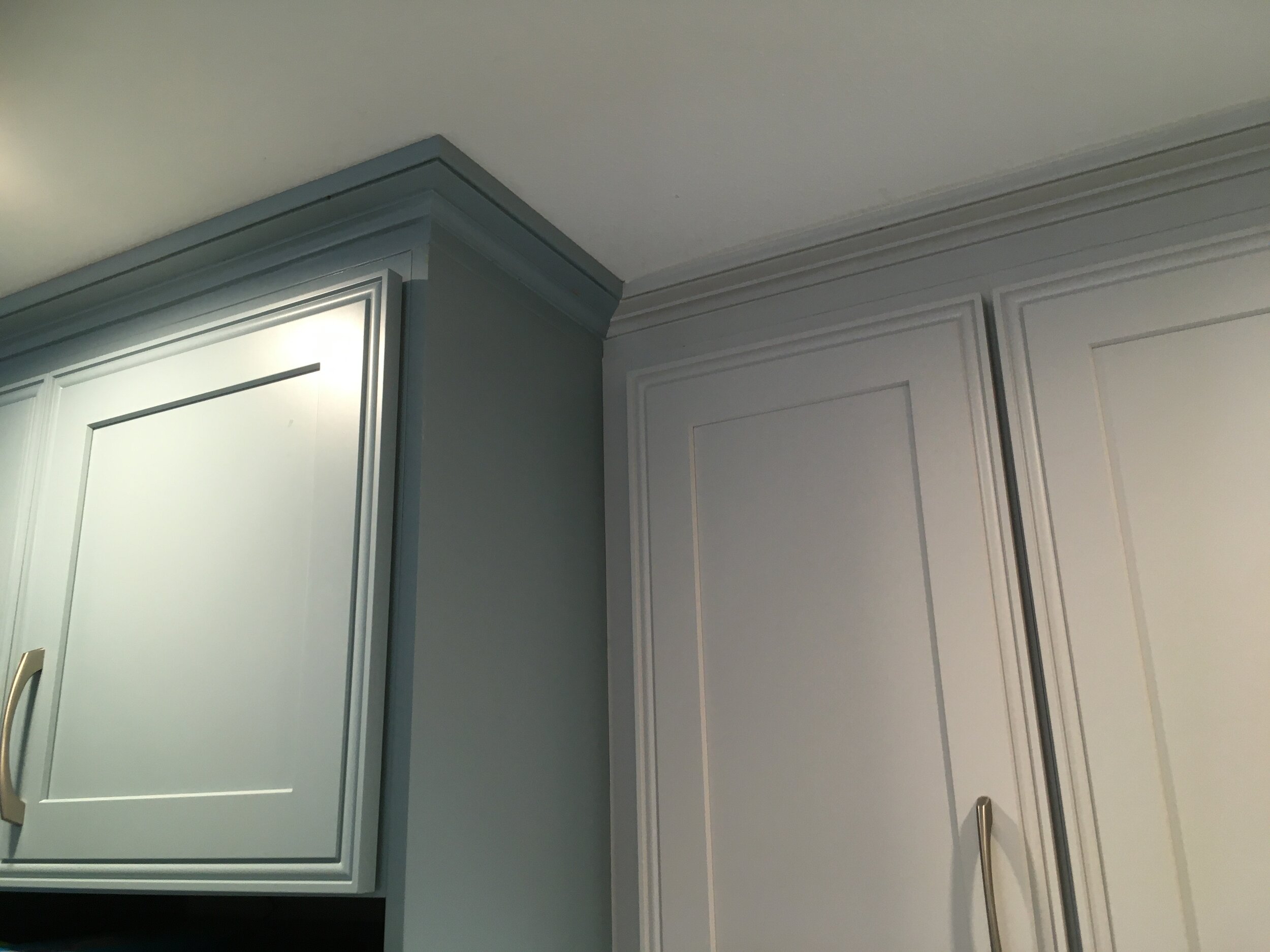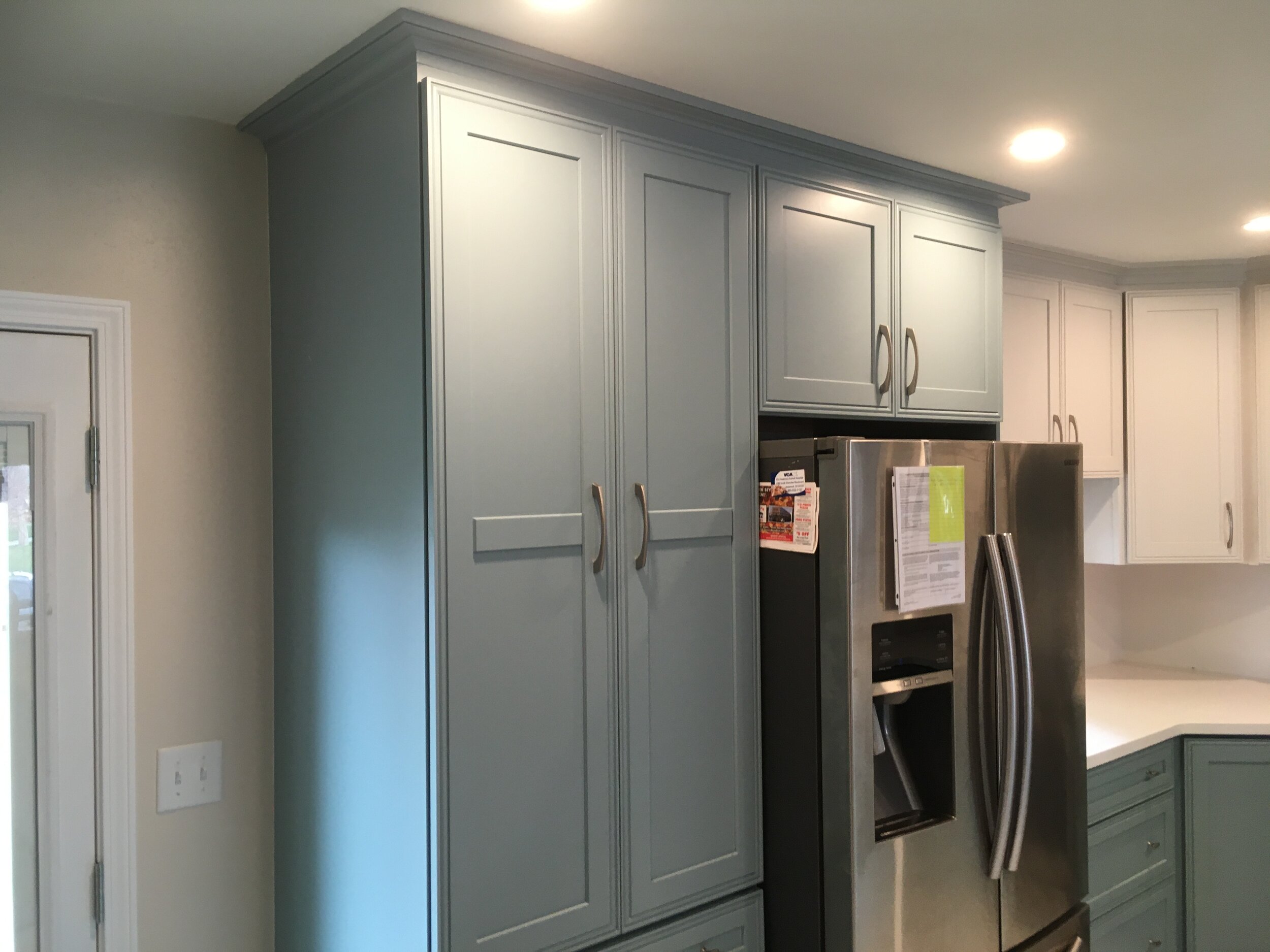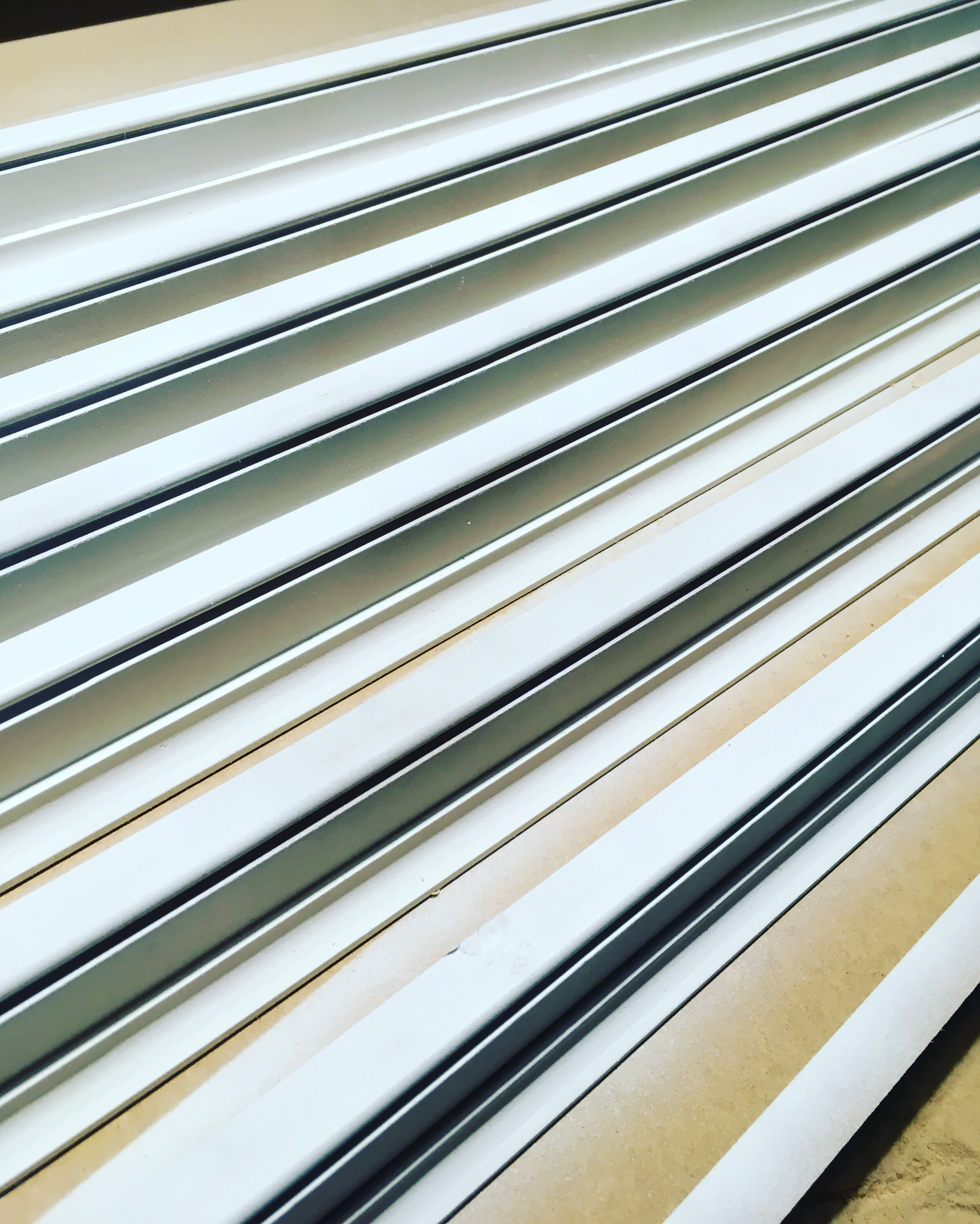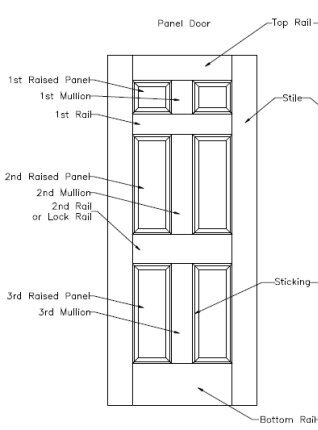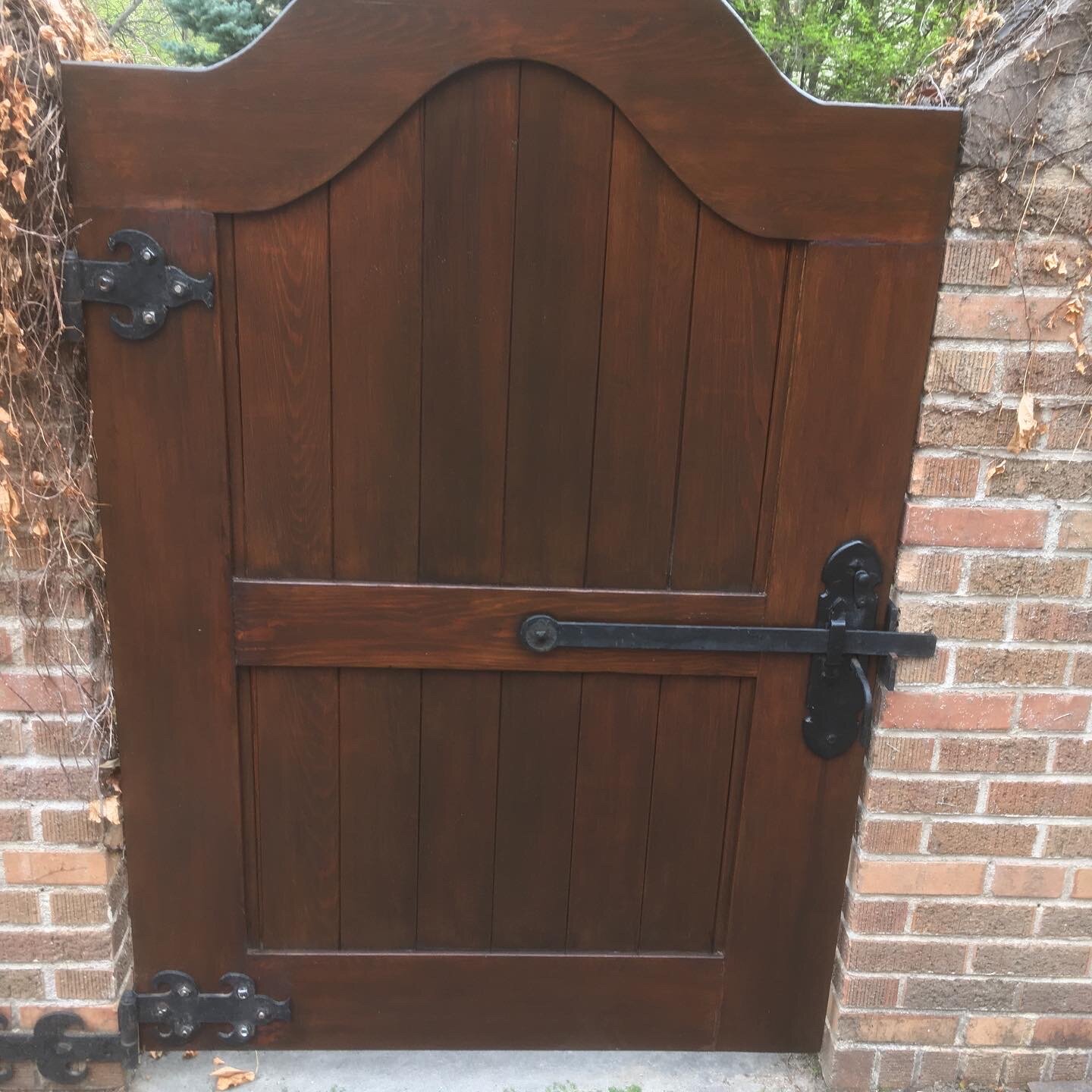When you’re changing out the flooring in your home, one of the best upgrades you can do is making all of the flooring one height, without transitions. It’s a really sleek look that makes a big difference in the aesthetics of your home. I had an issue come up recently on a kitchen remodel where my scope of work was narrow, only replacing the doors and drawer fronts of existing cabinets, but the homeowner was replacing the kitchen flooring at the same time and self-contracting all the work. I wanted to be sure they had considered all of these issues that can be a problem with lowering the flooring in your existing kitchen.
Cabinetry
To change the flooring height in an existing kitchen essentially means re-installing the cabinets. The original flooring almost always laps under the cabinetry and the cabinets rest directly on the flooring generally with some fine adjustment with shims—tapered wooden pieces for positioning cabinets. The cabinets are set level from left to right and front to back and sit on top of a wooden box called a “ladder base” or a “toe kick” or in some newer European-style kitchens, on metal or plastic adjustable legs called “leg levelers” such as these made by Hafele. That box may need to be removed and cut down, then the cabinets set back on top of it ideally. Alternatively, the flooring can be cut out flush with the cabinet ladder base or legs and a taller toe kick added in front, but that means that the toe kick will be out of proportion to the cabinetry.
If you’re planning for cabinet end panels, and you should be because they look great, standard height end panels won’t work; they’re designed for a cabinet that is 34.5” off the ground (30” cabinet box plus 4.5” toe kick). An alternative would be wrapping the toe kick around the side of the cabinet and holding the panel up flush with the bottom of the cabinet, but it’s not as contemporary in my opinion.
Refrigerator panels, full depth floor-to-ceiling panels on either side of the refrigerator are used to transition between 24” deep refrigerator cabinets and 12-15” deep wall cabinets. When the flooring and the cabinets drop 1”, the panels do too. This means a gap at the top and replacement is recommended.
Full-height cabinets such as pantry or broom closet cabinets are often designed so that their door heights line up with everything else in the kitchen. If you drop the pantry cabinets 1”, and you have crown moulding on top or the cabinets are tight to the ceiling, there will be a gap to deal with and your upper doors won’t line up with the rest of the upper cabinets! Luckily this isn’t an issue on every kitchen, but with many kitchens, it needs to be considered.
Counter tops
- The counter tops are attached to the wall and the cabinets, so dropping just the cabinet height is not possible without removing the counter tops. Unfortunately the counter tops are permanent attached generally with a heavy duty adhesive. It’s possible to cut the adhesive in back and between the tops and cabinets, but you run a high risk of damaging one of both of the items.
If there’s a backsplash, the spacing of the tiles won’t work out anymore. You’ll either have a short course all along the counter top height or replace the backsplash entirely. That adds more expense, time, mess, and another trade potentially if the rest of the house isn’t getting tile.
We had initially planned to cap the counter tops with a 1/2” veneer of quartz to minimize down time, expense, and damages since the client was currently living in the condo. With lowering the floor height though, it would probably be best to remove the counter tops completely. The existing flooring is 3/4” tongue and groove oak, plus whatever underlayment is there. If you remove the flooring and install new veneers over the existing tops, it adds another 1/2". That’s 1-1/4” variance before the new flooring is added. If that’s a thin vinyl plank or even a thinner tile, it would be best to replace the counter tops to avoid having a large step-down between the cook top and counters. The dishwasher would have to be raised as well, or there would be a large gap between the dishwasher and counter top.
Plumbing
The Sink
The sink drain height is set by the cabinet height, so dropping the sink cabinet means re-plumbing the drain line. it may be as simple as cutting down the drain pipes, but if the P-traps are in the way, may be more of a pain.
If you have rigid copper supply lines, it could mean re-plumbing the supply lines, but most are flexible with enough slack.
Often the kitchen is vented with an air-admittance valve (AAV) that is tucked up under the sink. It may be too high to drop the sink down a bit without cutting the vent line down.
The Dishwasher
The drain line for the dishwasher is drilled through the sink cabinet at a specific height to allow for an air lock which keeps the water line from dry venting sewer gas into the drain, so it would mean re-plumbing that drain line 1" higher.
The Refrigerator
Sometimes, I’ve seen supply lines for the refrigerator’s ice maker run through the flooring. A 1/4” line can be tucked into a groove in the underside of 3/4” flooring and secured in place. Is it a good idea? NO! But people do it. There’s a chance that in dealing with a slab on grade kitchen, you may have to relocate this line and trench it into the concrete slab or re-route it through the walls or cabinet.
Appliances:
Speaking of dishwashers, the dishwasher and range should be raised an inch ideally and left alone using plastic shims if the adjustable feet aren't long enough. It's important to lay the flooring under the dishwasher so that the dishwasher isn't pinned into the opening, which makes removal a huge ordeal down the road. The refrigerator also drop 1”, so the existing fillers between the refrigerator cabinet and the refrigerator will be an inch short and, as mentioned above, side panels on either side of the refrigerator are sitting on top of the flooring directly and will need to be replaced, since dropping them would make them too short at the top!
Flooring
Right now the kitchen that prompted this article had tongue and groove oak flooring. That's pretty tolerant of height variations in the concrete floor. Under the floors, the subfloor is what we call "slab on grade" but these concrete floors are poured to different tolerances depending upon floor covering. When the original builder is planning to install carpet, linoleum, or another variance tolerant flooring product, they don't worry as much about floating out the concrete to be perfectly flat and that means less labor.
Sometimes, with tile or vinyl plank, variations on the floor height can cause lipping in tile where one tile sits higher or lower than an adjacent tile or cause hollow spots under laminate flooring that can damage the flooring and cause it to bow and crack over time. You get some areas that sound hollow as you walk over them with hard-soled shoes, and you can hear boards move and creak as you walk sometimes.
Best practice is to use self-leveler over these areas if it's necessary to make a consistently flat concrete surface to apply the flooring or grind down the high spots. Your flooring installer won't know if that's necessary until the flooring is removed and could be an added expense that you didn’t budget for. Some installers want to skip this step and it can mean a sub-par flooring install. It could be flat enough that an underlayment will flatten things enough to be fine, or some areas could need grinding down if there are high spots.
I’ve seen an installer have to replace the flooring and ground down high spots after the fact, but that fine abrasive dust can be really problematic. In once case a thin layer of this abrasive dust settled into the expensive undermount soft-closing drawer slides and made them malfunction prematurely due to dust sticking to the fine layer of grease inside the mechanisms. This dust settled onto the high gloss acrylic laminate door and drawer fronts too, and when the flooring contractor went to wipe down the cabinets at the end, they put thousands of tiny scratched into the laminate! The kitchen was a total loss at only 3 months old and the replacement parts cost nearly $20,000.
Conclusion
So, yes, you can drop your flooring height in an existing kitchen, but nothing in a remodel happens in a vacuum! That's where a good contractor earns their keep, weighing the pros and cons, managing the subcontractors and workflow, and making these tough decisions in the client’s best interest without burdening them the nitpicky details.
Have questions about your upcoming remodel and want to run through the workflow? Use our contact for to reach out.
